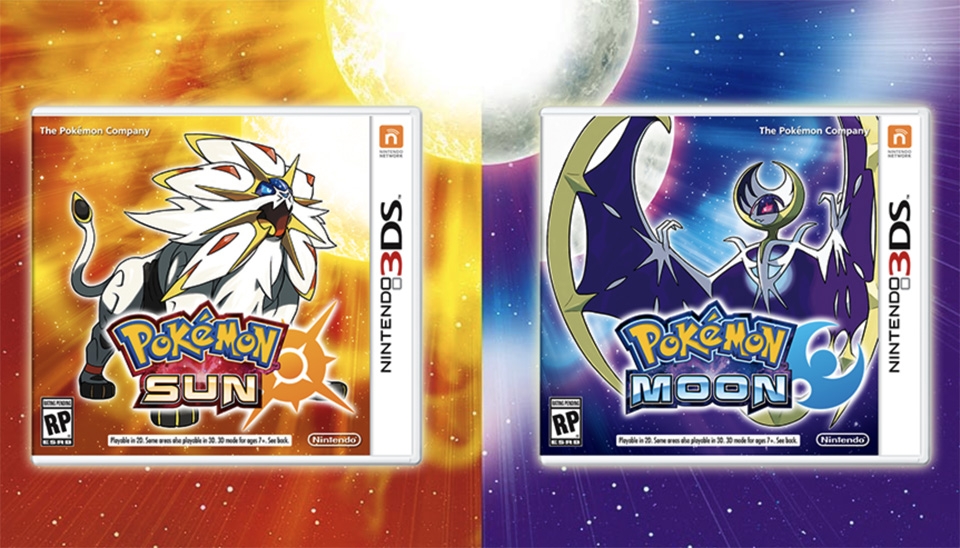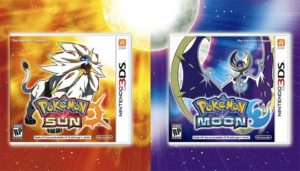

“Sun and Moon” are the 28th and 29th games in the widely popular Pokémon franchise. Both were released on Nov. 18 to wide critical and financial success.
By Grant Stoner | Staff Writer
For over 17 years, across six regions, I have begun each adventure by carefully choosing my first companion. Squirtle in “Kanto,” Cyndaquil in “Johto” and many more Pokémon have accompanied me on my numerous quests to become the very best. Now, with the moonlight to my back, and Rowlet at my side, I am ready to see what surprises “Alola” has in store.
Developed by Game Freak, the Pokémon franchise makes a triumphant return for a seventh generation in the form of “Pokémon Sun” and “Pokémon Moon.” Yet, this is no mere rehash, as familiar past mechanics become revitalized through unfamiliar and exciting new features.
The duo of games bring to life the story of a young trainer who sets out to defeat the Pokémon league, becoming its latest champion. Throughout the journey, the trainer must save the region from a menacing group of ne’er-do-wells, in this case, the beat-boxing, occasionally obnoxious members of “Team Skull.” Despite the core aspects, “Pokémon Sun” and “Pokémon Moon” removed one of the most integral features of Pokémon games — the collection of badges.
Rather than acquire eight badges, received after defeating various gym leaders, this new generation offers what are known as “Island Trials,” and “Grand Trials.” “Island Trials” are unique side-quests, which require the trainer to complete a series of obscure tasks before challenging a guardian known as a “Totem Pokémon.” These monsters begin each battle with a boost to a specific stat, as well as the ability to summon other Pokémon for aide, a new feature appropriately dubbed “S.O.S Battles.” After defeating the “Island Trials,” the Kahuna, or chief, of each island will challenge you to a “Grand Trial,” the closest resemblance these games have to gym battles.
To further differentiate itself, the region of “Pokémon Sun” and “Pokémon Moon” generally feels more alive than its predecessors. With the removal of grid-like movements, trainers and their respective Pokémon traverse the landscape, appropriately interacting with the environment and characters. Cut-scenes are filled with expressive gestures, and battles are brought to life through quirky trainer reactions. The look of agony and despair on the faces of numerous “Team Skull” members after a crushing defeat never gets old.
Aesthetically speaking, “Alola” perfectly captures the characteristics of the Polynesian and Hawaiian Islands. Vibrant coastal towns, such as “Heahea City,” lush tropical jungles and caverns, lit by small rays of sunlight, are teeming with exotic Pokémon, powerful trainers and necessary items used to complete your journey. The region itself is comprised of four separate islands, easily accessible through ferries, housing their own unique species of Pokémon and events. Despite the isolation of each island, I rarely felt that I was playing a disjointed game. The quick and seamless transitions between each location created a cohesive package.
With every Pokémon game, battling is an integral aspect, and “Pokémon Sun” and “Pokémon Moon” continue to refine and perfect this tried-and-true system. The turn-based mechanics now alert players when certain moves are particularly effective against opponents. This is a welcome feature, especially since 802 Pokémon now occupy the world, which can be a chore to remember which attacks would be appropriate for each scenario.
In the last game, the series introduced a concept known as “Mega Evolution.” Approximately 50 Pokémon have the capability to “mega evolve,” thus changing their appearance, and granting them a large boost in specific stats. In “Pokémon Sun” and “Pokémon Moon,” “Z Moves” replace the monstrous evolutions, and most notably, can be used by every Pokémon. By equipping one of your creatures with an elemental “Z Crystal,” and after performing an entertaining dance, that Pokémon can transform an ordinary attack into a proverbial super move, allowing trainers to easily turn the tide of battle. However, there are restrictions. “Z Moves” can be used only once per battle, and Pokémon are unable to utilize a “Z Move” without the corresponding attack type. An electric “Z Crystal” will not respond to a fire move.
Tradition is the norm with Pokémon. After 17 years of personal playtime, the mechanics became monotonous and occasionally dull. Yet, “Pokémon Sun” and “Pokémon Moon” have revitalized the franchise into an unrecognizable, outrageously entertaining adventure, an experience I have not felt in almost two decades. Every path, battle and interaction was foreign and exciting, reinvigorating my love for my favorite series. While these games may not have reinvented the franchise, “Pokémon Sun” and “Pokémon Moon” provide a delightful glimpse of possible directions for future titles.




